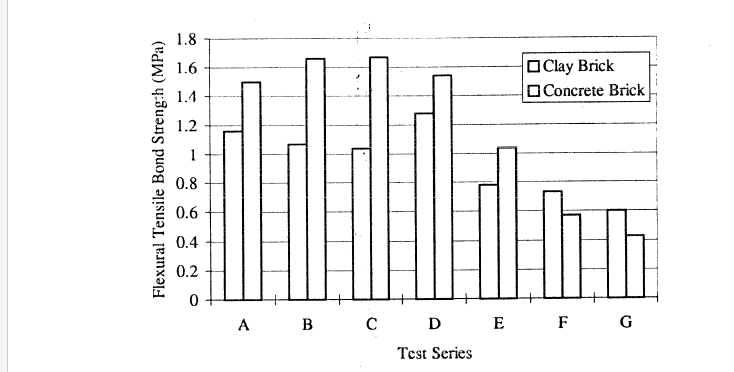1 P.E. Atkinson-Noland & Associates, Inc. 2619 Spruce Street Boulder, CO 80302, (303) 444-3620, info@ana-usa.com
2 E.I. T. Atkinson-Noland & Associates, Inc. 2619 Spruce Street Boulder, CO 80302, (303) 444-3620, info@ana-usa.com
3 Chemical Lime, P.O. Box 127, BMI Complex Henderson, NV 89015, (702) 565-3833, mthomson@anv.net
ABSTRACT
A research program was conducted to compare various properties of traditional portland cement-lime mortars with properties of mortars containing lime-replacement additives. One of the objectives of the investigation was to compare the mortar-unit bond strength provided by the different mortar types and to compare the variability in test data obtained using clay brick versus the standard concrete brick required by Uniform Building Code Test Method 21-20.
Brick, block, and mortars were characterized using standard ASTM test methods. In addition, surface roughness of brick and block W?-S measured using a laser profilometer. Bond strength tests were conducted at an age of 28 days, following the requirements of UBC Test Method 21-20. Results indicate that portland cement-lime mortars have greater bond strengths than lime-replacement mortars. Bond strengths of masonry built using the NCMA standard concrete brick were greater and had less within-test variability than companion bond tests conducted using an extruded clay brick.
8248.pdf



